Add Some Muscle To Fitness Marketing
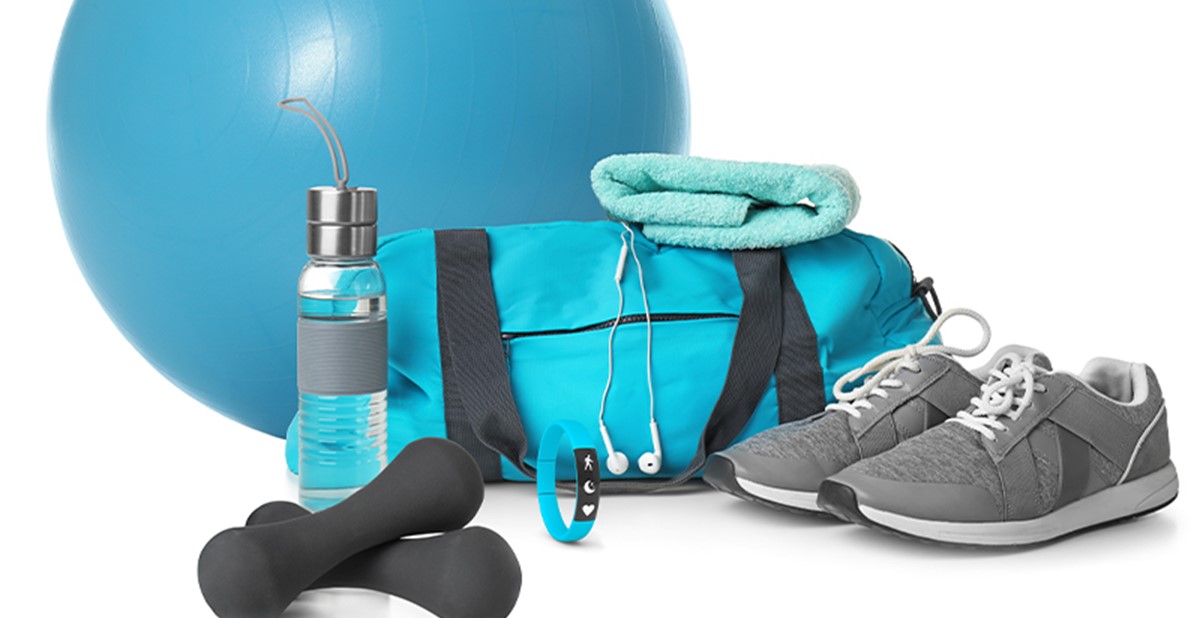
The future of fitness is looking strong. Globally, the fitness industry is valued at about $87 billion, according to Zippia. By 2028, it’s projected to reach nearly $435 billion. The market is wide-reaching, including any person or business that focuses on health, exercise and overall body maintenance.
People want to keep fit or get in shape for many different reasons, with men typically exercising more for enjoyment, while women work out more for weight loss and toning, according to a report from the National Library of Medicine. Many aerobic and nonaerobic exercisers are refocusing on fitness to drop some pandemic pounds. Since the pandemic began, about 42% of U.S. adults have gained weight — 29 pounds on average — according to the American Psychological Association’s Stress in America report.
However, for most people, fitness isn’t about trying to drop a few lbs. or get those six-pack abs — it’s about pursuing overall wellness. The pandemic sparked a greater interest in immune health, with more than half of Americans (55%) focusing on their health and wellness to be able to better withstand illness and disease, according to the American College of Sports Medicine’s “Health & Fitness Journal.” Nearly two-thirds of Americans (65%) say they are focused on health and wellness because they want to live a long and healthy life.
When gym owners, trainers, coaches and other fitness professionals want to reach new clients or motivate current clients, they can use promotional products in all kinds of ways. From fitness challenges with logoed gear as prizes to promotional items for signing up for memberships or boot camps, customized merchandise gives fitness-focused businesses a powerful way to stay in front of their target audience.
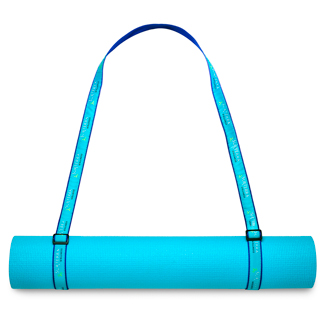
When yoga enthusiasts head to the studio to vinyasa flow and downward dog, the Yoga Mat Carry Strap With a Sewn-In Label keeps a brand name visible. The strap features adjustable loops on each end and comes in a rainbow of colors.
WOV-IN / PPAI 113213, S5 / www.wov-in.com
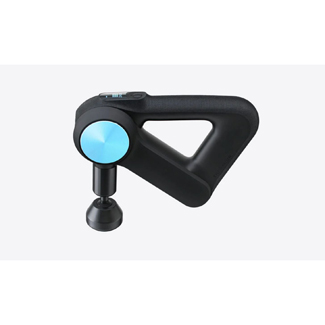
The Theragun PRO provides deep muscle treatment with six attachments and a super-quiet operation. This device, which can be held four different ways and offers a customizable speed range, can be custom engraved for corporate gifts to celebrate team fitness.
Therabody / PPAI 794574, S1 / www.therabody.com

The Egg Weights Cardio Weight Set makes a great gift from gyms, boxing studios and fitness centers. It includes two palm-sized, 1.5-pound weights inside a logoed carrying bag.
Logomark, Inc. / PPAI 110898, S11 / www.logomark.com
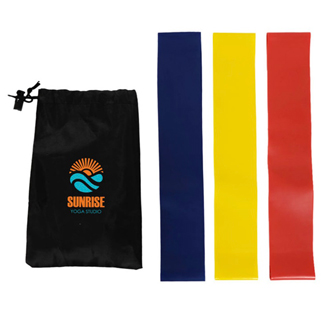
The Treble Strength Resistance Band Set helps athletes get a good workout when they’re away from their gyms. It includes three latex resistance bands, each with a different level of resistance. The bands are packaged inside a customized polyester pouch for easy storage and transportation.
HPG / PPAI 110772, S11 / www.hpgbrands.com
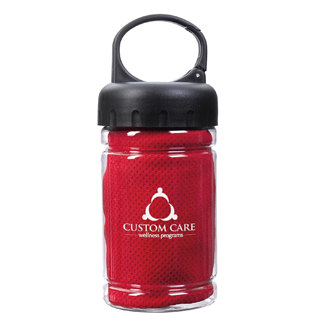
From football to field hockey, sports fans can stay cool and comfortable with the Carabiner Bottle With Cooling Towel. A quick-absorbing, quick-drying towel is packaged inside a logoed plastic tube with a built-in carabiner.
IMAGEN Brands / PPAI 114197, S10 / www.imagenbrands.com
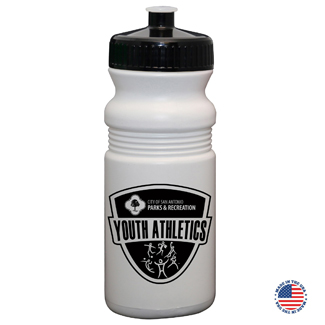
A favorite at 5Ks, fun runs and walkathons, the 20-Ounce Sport Bottle also makes a useful booth giveaway at community events. This BPA-free sport bottle is 100% recyclable and includes a push-pull lid in a variety of colors.
Vision USA / PPAI 112771, S6 / www.vision1usa.com
Market Snapshot
The pandemic propelled changes in how people work out, and many of those changes are here to stay. The American College of Sports Medicine’s worldwide survey of fitness trends reveals that people continue to gravitate toward exercising outside of a traditional gym setting. In the U.S., this year’s top three fitness trends include wearable technology like fitness trackers and biosensors, home-exercise gyms and outdoor activities.
When they’re working out, 59% of adults choose outdoor activities like running, walking, hiking and training, which is up from 14% in 2020, according to a global fitness trends report from Run Repeat. More than a third of gym members (39%) switched to running or outdoor activities last year.
As consumers continue to pursue their own kind of fitness, whether that means exercising primarily in the open air or taking a hybrid approach, brands can be part of their journey with valued and useful promotional products.
Get Moving
Here’s how much physical activity people need based on their age and other factors.
Kids and teens: At least 60 minutes of moderate to vigorous physical activity daily.
Adults ages 18-64: At least 150-300 minutes of moderate aerobic activity weekly.
Adults over 65: The same as younger adults but with recommended strength and balance training 2-3 times a week.
Pregnant and postpartum women: At least 150 minutes of moderate aerobic activity weekly.
People with chronic health conditions and disabilities: The same as healthy adults and children, but with modifications recommended by their physician.
Source: World Health Organization
Places With The Most (And Least) Fit Populations
Some cities are home to more fitness enthusiasts than others. AdvisorSmith, an information resource for small-business owners, did the heavy lifting in examining CDC data on points like residents’ weight and exercise habits.
These cities rose to the top with the fittest residents:
- Burlington, Vermont
- Sarasota, Florida
- San Jose, California
- Manhattan, Kansas
- Denver
- Colorado Springs, Colorado
- Boston
- Seattle
- Madison, Wisconsin
- Provo, Utah
These cities are home to the least-fit residents:
- Huntington, West Virginia
- Tulsa, Oklahoma
- Beaumont, Texas
- Grand Island, Nebraska
- Jackson, Mississippi
- Mobile, Alabama
- Baton Rouge, Louisiana
- Wichita, Kansas
- Kingsport, Tennessee
- Corpus Christi, Texas
States With The Highest (And Lowest) Number Of Fitness Centers
These states have the most gyms per 100,000 residents:
- Minnesota
- Connecticut
- Wisconsin
- Iowa
- New Hampshire
- Louisiana
- Rhode Island
- Colorado
- Nebraska
- South Dakota
These states have the fewest gyms per 100,000 residents:
- New York
- North Carolina
- Arkansas
- Maryland
- California
- New Jersey
- West Virginia
- Mississippi
- Oklahoma
- Arizona
Source: Zippia
Pet-Friendly Fitness
Consumers are increasingly interested in staying fit with their furry friends. Nearly half of Americans (40%) want to work out at pet-friendly fitness venues, with Gen Z and Millennials expressing the greatest interest (50%). Over a third of Americans (37%) say they would like to participate in an activity like goat yoga.
Source: 2022 Mindbody Wellness Index
Who Works Out At Gyms?
- Men and women, about equally: 50.5% of gymgoers are female.
- Adults ages 18-34 go to the gym most often, followed by adults ages 35-54.
- 16% of gymgoers are younger than 18.
- 66.3% of gymgoers are white, 12.7% are Hispanic and 12.3% are Black.
- Most gym members have a household income of $75,000 or more.
- 63.3% visit the gym at least twice a week, while 16.3% go at least once a week.
Source: Finances Online
New Year, New Me
Before the ball drops in 2023, most people who make New Year’s Resolutions will declare some kind of fitness-related goal. Last year, 91% of Americans made one related to fitness, with 1 in 2 people making a resolution to balance their physical and mental health. Their top reasons for making these resolutions? To be healthier and to feel better about themselves.
Source: Planet Fitness survey conducted by Kelton Global
All About Personal Trainers
The U.S. is home to more than 133,000 personal trainers. More than half of personal trainers are male (63%) and earn an average annual salary of $58,700. Most of these professionals have a bachelor’s degree (67%) and commonly work in healthcare (26%), education (23%) and hospitality (7%). Jobs for personal trainers are projected to grow 39% from 2020-2030, which is much faster than average for all occupations.
Sources: Zippia and the U.S. Bureau of Labor Statistics
Swanky Sweat Sessions
At many higher-end gyms, members are pumping iron in posh surroundings and then enjoying resort-style perks, like massage tables, laundry service and terrycloth bathrobes after a dip in a saltwater pool. Some gyms also provide access to on-site dietitians, physical therapists and sports medicine professionals. These perks come with a high price tag. While the average gym membership costs $58 a month, according to Moneycrashers, members at some gyms may spend upwards of $30,000 a year to work out there.
Plan Now To #MoveInMay
Every May is observed as National Physical Fitness and Sports Month. Fitness centers, personal trainers, sports organizations and gyms can use promotional products to inspire people to be more physically active throughout the month and to educate them on all the benefits of staying active. For example, people who complete just half of the recommended weekly physical activity are 20% less likely to have depression, according to a study conducted by Cambridge University. Those who achieve the full 150 minutes (or more) reduce their depression risk by 25%.
Click here for a buyer-safe version of this article.
Sellers is a Dallas-Fort Worth-based writer and former associate editor at PPAI.

